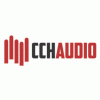We're looking at starting on doing some in-house foley work - not synthesized stuff but real recording of real objects. I understand that this is very much an artistry thing, but does anyone have any basic tips or advice to share? Particularly dealing with things like mic choices, recording distances, post processing, etc.
Anyone have tips on doing foley production?
Microphone: Sennheiser MKH 416. This is my absolute favorite foley mic. It's very clean and has a very tight pickup pattern. The only thing it's not great at are harsher highish frequency sounds (like paper) which I prefer a large diaphragm mic on.
Pre-Amp: You want something clean that won't color the sound too much. Grace makes really nice foley pres. I don't have one (using an Amek 9098) but I've heard them and they're really nice for this kind of work.
Room: Small and dead. My VO booth doubles as my foley room. Larger rooms the reflections can be a bit much at extremely high gains and you hear the space too much.
Mic Stand: Get a solid short mic stand that you can adjust easily because you're going to be doing that a LOT. Shorter stands that can telescope are better because you're going to be doing a lot of stuff near the floor, not up in the air.
Practice makes perfect. The strangest objects can make the coolest sounds. I have crates filled with random things that make useful sounds. If you're doing anything to video watch the shoulders. People's shoulders will tell you how they are going to move and step and it makes it easy to mimic them.
Finally don't eat a big lunch before you start recording. Shotgun mics are crazy sensitive and with the really high gains you will hear every gurgle. Seriously I can even hear my own heartbeat sometimes.
Also shoes and surfaces. I built these big wooden boxes with handles I can move around. Have 1 for dirt, gravel, sand, concrete (really heavy one), wood, tiles, etc. Then a box filled with more shoes than my wife has. For every one really fun cool effect you make you're going to walk a mile in place (c: But this way I can record all those footsteps in a nice quiet recording room instead of going outside; your roomtone/noise floor stays the same as well.
Microphone: Sennheiser MKH 416. This is my absolute favorite foley mic. It's very clean and has a very tight pickup pattern. The only thing it's not great at are harsher highish frequency sounds (like paper) which I prefer a large diaphragm mic on.
Thanks, but I should've probably specified a budget. We're indie and want to get a little more control of our production, not exactly a serious recording studio. Do you have a recommendation for something similar down in the $300-500 ballpark? A thousand is a tough pill to swallow for a guy who uses SM 57s, 58s and Rode VideoMics for nearly everything ![]()
Actually it's worth noting that we're going to be doing a lot of water recording - splashes, etc. Would this be better suited to a large or small diaphragm mic?
Pre-Amp: You want something clean that won't color the sound too much. Grace makes really nice foley pres. I don't have one (using an Amek 9098) but I've heard them and they're really nice for this kind of work.
I have a Scarlett Focusrite 2i4 for my instrumental work. I believe these are well regarded as transparent entry level mic pres, but I don't know if there's something that would make it suboptimal for foley.
Room: Small and dead. My VO booth doubles as my foley room. Larger rooms the reflections can be a bit much at extremely high gains and you hear the space too much.
I think we'll probably end up Auralexing a small room - I was thinking of doing a Whisper Room but I don't think we'll bother if we can get reasonable results out of a suitably treated normal space.
Also shoes and surfaces. I built these big wooden boxes with handles I can move around. Have 1 for dirt, gravel, sand, concrete (really heavy one), wood, tiles, etc. Then a box filled with more shoes than my wife has. For every one really fun cool effect you make you're going to walk a mile in place (c: But this way I can record all those footsteps in a nice quiet recording room instead of going outside; your roomtone/noise floor stays the same as well.
Our work is actually likely to be water focused (and sans people), but I think we're going to do something along the same lines with home aquarium tanks.
You'll want a shotgun mic, I believe Audio-Technica AT8035 is about $300. The focusrite pre you have will work well with it, the only issue you may run into is headroom. My C|24 is pack with them and even cranked all the way I just can't get enough gain a lot of the time.
I actually have a whisper room and they're not very good. Even with the double-wall mod it's really 'tubby' sounding ended up having to treat it with some massive bass traps that took up a lot of the space.They also get really hot and their 'quiet-air-passthrough' is a joke. Spent a fortune on it and I really regret it. It's ok for VO work but that's about it.
Auralex looks nice and works fairly well but the price can add up.Auralex is great for high frequencies, ok at mid, and does nothing for low. It also has a tendency to dry out over time, it's good for maybe 5-7 years or so and then it just crumbles (even in a humidity controlled environment).
I have 1 room treated with cylinders and they're amazing when you get them positioned right but the cost is crazy.
My cheapest best solution for a room was to build some thick boxes from 2x4s, put a plywood back on them, stuff them full of rock-wool and cover them with a nice breathable fabric. They soak up all the high and mid frequencies and do a decent job on low frequencies as well. Just cover you walls with them and it will look nice, work really well, and it's cheaper than auralex (plus it never goes bad).
dumpster diving behind carpet stores can yield sizeable strips of carpet underpadding which is basically auralex ;) but a lot of trash can serve the same purpose, if you're humble.
Ya know, if you're just doing this one time - you can also check out your local equipment rental places.
A quick search yields a 416 mic for $85 for 7 days rental. -- ADDENDUM : Another search - $30 PER DAY.
You'll need a recorder with a mic pre-amp - phantom power - also rentable.
To get the most out of your session, I'd rent two different mics - mic one at a slight distance and one closer to let you choose what perspective you'll use - or mix.
For water you will need to use something a little aways from the water hence the shotgun mic. You don't want to get your mic's wet! If you can find dry condoms (they do exist but probably by special order) or just take a condom and wash it out and make sure there's absolutely nothing in it - you can cover your mic. The membrane is thin enough to let sound through while keeping the mic dry from little drops. Even better you can put a pop filter infront of the mic to stop the liquid really hitting the condom membrane hard and making little pop noises.
If you are hitting things, turn the gain down on the preamp so you don't clip the close mic. This way you'll get a good amount of detail from the ring out, and you can always edit/fade in the transient or blend with the distant mic.
For creating a space that will deaden the room a bit, you can use cardboard boxes or some kind of frame and drape a very large feather duvet over it. Line reflective areas with pillows or hang a thick curtain to help remove some of the higher freuqencies.
As for recording distances, use your ears to find the sweetspot for each channel. This is also why you want 2 sets of mics with different distances so you can get better recordings and not waste so much time recording 2 takes close and distant and that doesn't yield the same same sound.
You may also want to put down plastic on the floor if working with water. Then get some towels - and lay them down too to soak up extra splash and prevent plastic feet / splash sounds interfering with your recording.
A good book to buy is Mixing With Your Mind - talks about mic placement amongs other things in an easy to understand fashion. We were recommended this book when I went through my audio engineering course.
www.GroovyAudio.com
ftr, in my (possibly singular) opinion, in the late 1990's the quality of cheap mics improved drastically. i always liked cheap electret capsules (eg. radio shack) for their brightness with a lot of "detail" sounds, you can buy fantastic mics under $100 nowadaze, same for pres, is it ART? that does a "tube pre" for like $30, as quiet as you could need..
shotguns are for picking out sounds at a distance.. they have a 2nd capsule that cancels the signal from the first and narrows the p/u pattern... so i'd forego them unless you are actually working with actual DISTANCE. that's what they're for. just get a mic, plug it in, make some funny noises. leave spending lots of $ to people who like to shop and own rather than develop.
Here's a quick mic comparison with the mics I own.
This was a glass of water poured, tapped with the other class, and flicked.
Recorded in a bedroom - with a PC about 4 feet away - pillows blocking it as best I could.
And for Kicks - a portable
Sony PCM-D50 stereo - native mics in XY pattern - but also set up as 96khz 24bit
All mics were roughly same distance, same angle, and using exactly the same gain setting on the input - no mic-preamp except what is in the M-Audio Delta 66 Omni Studio box I have (very very old sound card). Recorded at 48khz 16bit.
Unfortunately one of my mic inputs just died - so I had to re-record each individually. Whilst not the same sound exactly, you can gain a little about each mic.
Of course if the room was silent, the MKH and Rode would have performed better.
www.GroovyAudio.com
Here's a quick mic comparison with the mics I own.
Thank you for posting that comparison! I have some questions about the quality differences, and posted the questions in a separate thread here.









